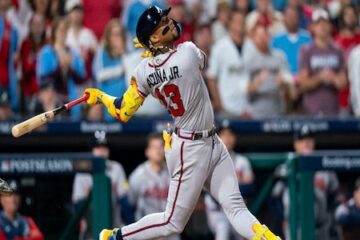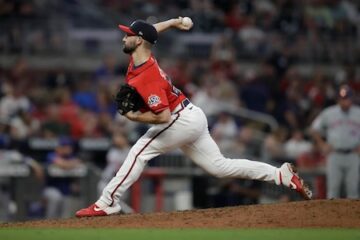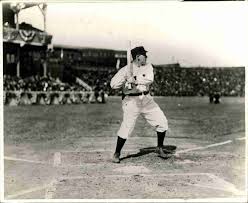2011 NBA Draft Prospects: A Crop of Talent We’ve Definitely Seen Before
The consensus number one pick for next month’s draft (June 23rd) is Arizona’s Derrick Williams who has been compared to the number one pick in 1994’s draft: Glen Robinson. Williams was on display during this year’s NCAA tournament where he carried the Wildcats to the Elite Eight where they were knocked off by eventual national champs Connecticut.
At 6’8’’ Williams has a similar body type to that of Glenn “Big Dog” Robinson who the Bucks selected first in 1994. The differences between the two may lie in Williams’ elite level athleticism which has sometimes hurt the young forward who found himself in foul trouble too often (2.8 FPG in 30 MPG). Staying out of foul trouble and remaining on the floor will be one of the few knocks on Williams who has scouts drooling now that the 20 year old has developed a dependable jump shot (42-74 3PT FG).
With Minnesota, Toronto, Cleveland, and Washington as the leading candidates for the first pick, general managers who fail to snag Williams won’t be apoplectic considering there’s a bevy of top flight draft options behind Derrick Williams who will be a building block of one lucky franchise.
Kyrie Irving: Jason KiddDuke’s Kyrie Irving has the uncanny playmaking skills only matched by another great point guard, the #2 pick in 1994 Jason Kidd. Like Kidd, Irving hasn’t doesn’t posses the jump shot threat that will stretch defenses but scouts hope that the young Irving will develop a perimeter jumper much the way that Kidd has as his career has progressed(18-39 3PT FG in ’10-’11).
In just one brief season at Duke, Irving gained the exposure and the hype necessary to make his speed and orchestrating ability the top attributes for the draft’s top guard. Cleveland appears to be the ideal fit for Irving considering teams like Minnesota and Washington already have young point guards in place with Johnny Flynn and John Wall respectively.
Enes Kanter: Brian GrantKanter missed out this year on an opportunity to show off his low post ability after being ruled ineligible to play for Kentucky. Kanter has done enough in draft combines to prove that he can be a productive interior presence at the next level but also possesses the size to match up against any NBA forward.
Kanter will be 19 this summer, just old enough to be eligible beyond the league’s age restriction, but the Turkish big man’s age isn’t perceived to be a factor considering his 6’11’’, 261 pound frame will make him an immediate force on both the offensive and defensive glass. Like Brian Grant in ’94, Kanter may begin his NBA career coming off the bench but by midseason the youngster will surely be a mainstay on the block for an NBA franchise.
Jordan Hamilton: Donyell MarshallHamilton’s offensive ability is near the top on any GM’s draft board but on the only chip on the former Texas Longhorn forward is his inability to commit on the defensive end. Akin the Uconn’s Donyell Marshall in ’94, Hamilton will undoubtedly find significant minutes at the NBA level but the length of his role as a starter will remain dependent on Hamilton’s willingness to develop his all-round game.
An above average shooter paired with upper level athletic ability, Hamilton will have no trouble getting his shots (39% 3PT) over smaller forwards and at 6’7’’ it wouldn’t be difficult to see him develop as a rebounder too (7.7 RPG as a sophomore).
Tristan Thompson: Juwan HowardHamilton’s teammate at Texas, Thompson at only 20 is a shadow of Juwan Howard, but during his freshmen season in Austin the young forward showed off his 7’2’’ wingspan and his energy attack much the way Howard did during his tenure at Michigan.
Scouts have raved about the youngster’s soft hands and quick feet that will give hope that Thompson is merely scratching the surface of what he will become at the next level. Consistency will be the focus point come draft day for Thompson who was seemingly absent from numerous games this season including the 70-69 loss in the Sweet Sixteen to Arizona where Thompson contributed a meager 4 points in 36 minutes. Scouts hope that they’re drafting the Tristan Thompson who posted 16 double-doubles in ’10-’11 and not the occasionally lapse inclined youngster scouts look to avoid.
At 13.1 PPG as a freshman, there’s little reason to doubt that he’ll be a presence for years to come should he put all the pieces together at the pro level.
Alec Burks: Jalen RoseBurks may not have the size of Rose or the lefty jumper, but Burks combination of scoring and playmaking ability make Burks a legitimate top 10 pick. Burks considered leaving Colorado after his freshman year, but decided another season would help to polish his skill set. For a back court player, Burks rebounds the ball as well as Rose (5.0 RPG as a frosh, 6.5 RPG as a soph.) and has a first round worthy mid-range to three point shot.
Burks won’t be the panacea for the NBA team that drafts him as he will likely be an immediate number two or three offensive option but not a top offensive option right away. There’s little doubt though the Burks will be a scorer eventually at the pro level considering outputs like his 36 points against Missouri and his 33 point effort against Texas.
One of the few negatives of Burks game is he occasionally takes on too much responsibility with the ball which results in a high turnover total (19 games in 2010-2011 with 3 or more turnovers). Scouts in the green room on draft day will look carefully at the talented guard out of Colorado but don’t expect Burks to make a resounding impact immediately at the professional level.
Kyle Singler: Bill CurleyBoth Singler (Duke) and Curley (B.C.) enjoyed four year rides at their schools where this pair of forwards did nothing but produce. Singler leaves Duke with a national title and a handful of ACC-1st team hardware while Curley similarly carried Boston College through the rigors of the Big East throughout the early 90’s.
The sharp-shooting forward lacks the rebounding ability to solidify himself as an starting power forward but he’ll create mismatches with his 6’8’’ frame at the small forward position (6.8 RPG/34.8 MPG). Teams may be sheepish come draft day considering Singler’s limited experience handling the ball and creating shots for himself(.86 assist to turnover ratio).
Kemba Walker: Khalid ReevesBoth legendary New York City players in their own right, Walker at Rice and Reeves at Christ the King, as both of these point guards demonstrated their scoring abilities at the college ranks (Walker 23.5 PPG his final season at UCONN and Reeves 24.2 PPG at Arizona).
Walker’s pro fortunes look a bit brighter following an unprecedented 11 straight wins en route to the NCAA national championship and his ability to conform to nearly any role. As a freshman Walker functioned as the 6th man while playing a reserve role to current Indiana Pacer A.J. Price and then as a sophomore Walker acted as the lead distributor (5.1 APG) to Jerome Dyson and Stanley Robinson all before taking on a leadership role in ’10-’11.
Depending on where the NCAA tournament MVP lands, Walker could be a building block for many NBA teams who lack a floor leader entering ’11-’12. Walker fans will hope that his professional career will outshine Reeves who disappointed many after surfacing on the periphery of only six NBA season.
Jimmer Fredette: Eric PiatkowskiPerimeter shooting has come at a premium in an age where transition offense has become the de rigueur and teams look to spread defenses across all 50’ of the floor. Much like Fredette, Piatkowski made a living from long range, converting 63 three pointers during his senior year at Nebraska all in a 21.2 PPG effort which placed the sharpshooter on the 1994 Big 12 First Team.
Fredette collected his own accolades by reeling in the Wooden Award as the National Player of the Year but scouts have their doubts about where Jimmer will fit on an NBA roster considering his 6’2’’frame which makes him too small to play shooting guard. Fredette’s 28.9 PPG his senior season gives a glimpse at what he may be able to accomplish at the next level should be find an opportunity to play more of shoot-first point guard rather than an off-the-ball shooter.
Written by
or
for Free Fantasy Sports Advice use our Quick Fix to get help with your team!






